Waldorf Music
Waldorf Music AG is a German synthesizer company. It was founded on 1 January 2003 to take over the actual business of the Waldorf Electronics GmbH which had become insolvent. Waldorf is best known for its Microwave wavetable synthesizer and Q virtual analogue synthesizer lines.
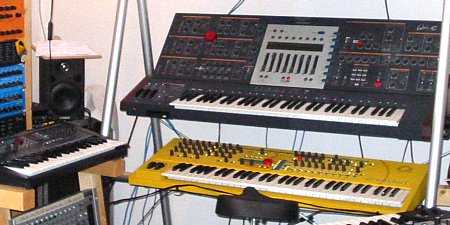

History
Waldorf Electronics GmbH was founded 1988 by Wolfgang Düren. Before this Wolfgang Düren was the German distributor of PPG. The name of this company refers to the German town Waldorf (near to the former capital of West Germany: Bonn) where the company was founded. The company was headquartered in Schloss Ahrenthal. In Summer 2006 a new company Waldorf Music GmbH (GmbH = limited) was formed officially. The Management board: Kurt "Lu" Wangard (former employee of Waldorf distributor in Germany, TSI), Stefan Stenzel (former Waldorf director of research and development). The new company is not a legal successor for the old Waldorf company. But maybe some support will be offered later.
Personnel
- Wolfgang Düren, Managing Director
In alphabetic order:
- Christian Bacaj (software)
- Ralf Bächle
- Andy Busse (software R&D in the early days of Waldorf)
- Jürgen Fornoff (software)
- Wolfram Franke, developer
- Florian Gypser, production & quality management
- Axel Hartmann, industrial design and corporate identity
- Chris Mercer
- Frédéric Meslin (software, hardware)
- Niels Moseley (software, hardware)
- Martin Neideck, central buying & organisation
- Frank Schneider, production manager
- Holger "Tsching" Steinbrink, Product Manager
- Stefan Stenzel, R&D Director

- and some freelancers working in and outside the castle:
- Claudius Brüse (product manager and manual of the WAVE)
- Albert Huitsing (software)
- Jörg Hüttner, (product support)
- Thomas Kircher (circuit design)
- Michael Marans (WAVE Manual Production and Design)
- Oliver Rockstedt (Writer, Microwave 2 Manual)
- Wolfgang Palm, designer of original PPG technology and the resulting "Waldorf ASIC" used in the Microwave and Wave synthesizers. Not an employee of Waldorf Music!
- Joachim Flor, sales
- Jay Metarri (notable user)
Products
1989
- Microwave. Rack wavetable synth. Built in two different hardware revisions: the first ones had a backlit LCD. The later ones a lit character display. They use a different Curtis CEM analog lowpass filter chips. Later called Microwave I due to the 1997 introduced Microwave II
1990
.jpg)
1991
- Microwave Waveslave. 1 HE voice extension for the original Microwave (adding another 8 voices)[2]
1993
- WAVE. A wavetable synthesizer. This was a deluxe extrapolation of Microwave technology, with additional features for wavetable creation and resynthesis that even today is not available on any other synthesizer. Available in 4 colours. 61 or 76 keys. 16, 32, or 48 voices and expandable to 120.[3] Retail price price in 1994 was $9000.00 with less than 200 made which value now at about $12,000.00 if you can find one. Among the most unique synthesizers ever made with a variety of knobs and sliders. Widely used by Depeche Mode, Hans Zimmer and, The Orb.
- 4-pole. Table top analog filter box.[4]
- EQ-27. Compact (table top) programmable and Midi controllable stereo 7 band equalizer.[5]
1994
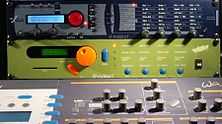

- Microwave I V2.0 ROM upgrade, which added additional wavetables, a facility to algorithmically create custom wavetables, a speech synthesizer, and numerous other improvements. The Waveslave was not compatible with this upgrade, but a trade-in program was offered where the user could upgrade to a full Microwave for a small fee.
- A limited edition Mean Green Machine was released at the same time as this upgrade, being a Microwave with a new "Nextel" rubberized finish in a green color, a certificate of authenticity, special cone-shaped metal feet, and comical silkscreening (the power switch was labeled Life, and the card slot was labeled Food.) Normal Microwave units from then on featured the Nextel finish in the usual blue color.
1995
- Gekko Chords & Gekko Trigger Very compact passive powered Midi tools
- Hohner Adam[6]
- Pulse Monophonic analog rack synth
1997
- Gekko Arpeggiator. Very compact passive powered Midi tool[7]
- Microwave II. Motorola DSP driven wavetable rack synth, containing many features of the original Microwave with improved mixing, modulation, effects processing, and multimode filter.
- Pulse+. Monophonic analog rack synth with additional audio in and Midi / CV interface
1998
- x-pole. Programmable stereo (in/out) analog filter in a 2HE rack module. With full MIDI, CV/Gate and ACM support.
- Microwave XT. Microwave II with 44 knobs and audio input, in 5HE package with bright orange color.
- Microwave XT Limited Edition. Microwave XT in charcoal gray/black color scheme, in a limited edition run of 666 units.
- d-pole. VST filter plug-in[8]
- Terratec Microwave PC. Synth module for the TerraTec EWS sound cards, featuring a fully functional Microwave II in a drivebay package.
- Wavetable Oscillator for Creamware Modular

1999
- Q. DSP driven virtual analog synth. 58 knobs! Colours: bright yellow "sahara" and WAVE blue.[9]
- XTk. The Microwave XT with a 49 key keyboard
- Q rack. Rack version of the Q synth. Fewer knobs. Only yellow.
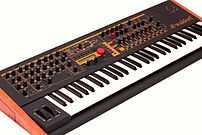
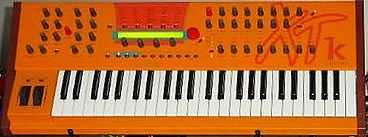
2000
|
Waldorf microQ yellow (ca.2000)  Waldorf microQ keyboard (2001) |
 Waldorf Q rack blue (1999/2001) Waldorf RackAttack (2002) |
- PPG 2.V VST plug-in synthesizer to emulate the blue PPG. wave 2.x wavetable synthesizers[10]
- microQ. Even more compact and affordable Q rack with only 7 knobs and different DSP. Differences: 25 potential voices compared to the original models, due to shared operation and effects chip. A 75 voice expansion is available. The upgrade must be done by Waldorf or licensed repair center. Typical usage depended upon complexity of patches, unlike the Q or Q Rack which feature 16 note polyphony, upgradable to 32 voices. The microQ did not include the step sequencer.[11]
2001
- Attack. VST drum-synth plug-in[12]
- Color of the Q, Q rack & mQ changed to the classic (Microwave) blue
- microQ keyboard. 3 octave keyboard version of the mQ. Classic blue coloured
2002

- D-coder. A TC Powercore synth and vocoder Plug-In
- RackAttack. The VST in a microQ housing
- Q+ A ruby red Q featuring up to 100 dynamically allocated voices and 16 analog lowpass filters[13]
- A1 VSTi software synth for Steinberg Cubase SX and Nuendo
- Waldorf Filter for Halion
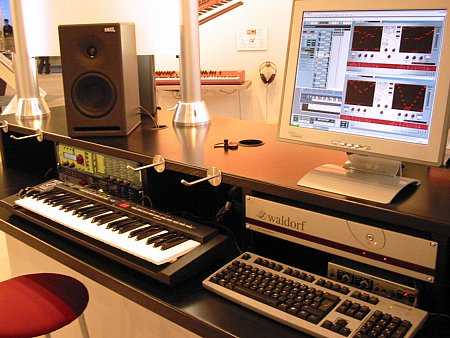
2003
2004
- On the 5th of February Waldorf Music declared insolvency at a German court.
2006
- In April 2006 Waldorf Music was reformed. Even though during August of that same year the website experienced intermittent availability resulting in multiple pronouncements of its demise, in November the Waldorf user mailing list/forum was resurrected.
- No new products were announced.
2007
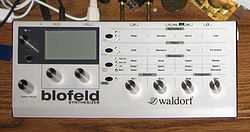

- Blofeld (released December 2007)
- At the start of 2007, Waldorf announces their new line of synths and electric pianos. These include special editions of their famed Q, Q+ and Micro Q line relabled as the Phoenix Edition and the introduction of brand new synths the Blofeld and the Stromberg. This is also the first time that Waldorf have ventured away from synths and produced an Electric Piano with the new Zarenbourg.
2009
- Blofeld Keyboard (released January 2009)
- The Blofeld Keyboard is a Blofeld housed in a compact metal case and features a four-octave semi-weighted keyboard and 60MB sample memory in addition to the Blofeld module.
- License SL - Blofeld License SL Sample Upgrade, is a software license that expands the Waldorf Blofeld desktop module with 60 MByte sample memory
- Largo - a software synthesizer that works as a VST and AudioUnit instrument.
2010
- PPG Wave 3.V (released December 2010) - a software version of the PPG Wave keyboards that works as a VST and AudioUnit instrument.
2011
- Lector - a software vocoder that works as a VST and AudioUnit plugin.
2013
- Rocket - a paraphonic hybrid synthesizer. [15]
- Nave - a wavetable synthesizer for the iPad. [16]
- Pulse 2 - a paraphonic analogue synthesizer. [17]
only distributed
- Emes Studio Monitors
done for Steinberg
- SMP 24 (for Atari ST)
- SMP II (for Atari ST)
- Midex+ (for Atari ST)
- Topaz (Harddisk recording, Mr. Wolfgang Palm was involved too)
References
- ↑ http://till-kopper.de/midibay.html
- ↑ http://till-kopper.de/waveslave.html
- ↑ http://unofficial.waldorf-wave.de
- ↑ http://till-kopper.de/4pole.html
- ↑ http://till-kopper.de/eq27.html
- ↑ http://www.till-kopper.de/hohner_adam.html
- ↑ http://waldorf.synth.net/gekko.html
- ↑ http://www.waldorfmusic.de/en/archive/d-pole.html
- ↑ http://waldorfmusic.de/en/products/q_keyboard
- ↑ http://waldorfmusic.de/en/products/ppg_wave
- ↑ http://waldorfmusic.de/en/products/micro_q_rack
- ↑ http://waldorfmusic.de/en/products/attack
- ↑ http://waldorfmusic.de/en/products/q_plus
- ↑ http://waldorf.synth.net/afb.html
- ↑ http://www.waldorf-music.info/en/rocket-synthesizer.html
- ↑ http://www.waldorf-music.info/en/products/nave.html
- ↑ http://www.waldorf-music.info/en/products/pulse-2.html
External links
| Wikimedia Commons has media related to Waldorf Synthesizers. |
- Homepage of the newly founded Waldorf Music GmbH
- Newly founded Waldorf Music's mailing list
- Waldorf User FAQs (faq.waldorfian.info)
- Archive containing manuals as PDF files, as well as all public OS versions of their products.